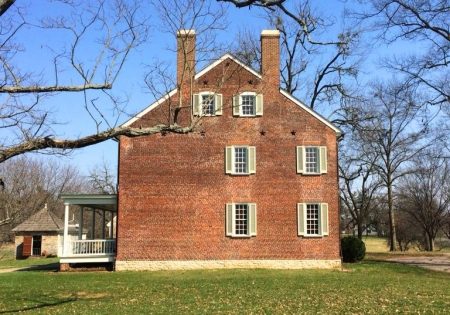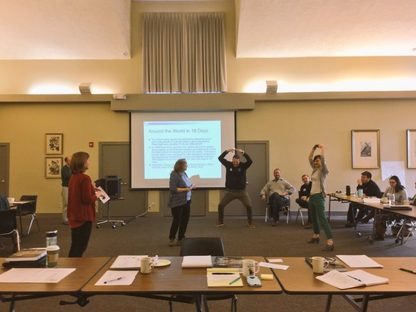 What do Locust Grove in Louisville, Shaker Village of Pleasant Hill, and the Harriet Beecher Stowe House in Cincinnati have in common? One, they all had connections to cholera. But more importantly, they all possess a strong desire to take a fascinating historical tidbit and demonstrate its relevancy today. Relevancy persisted as one of the major themes of the mid-March AASLH Workshop, Focusing on Visitors: Public Programming and Exhibits at History Institutions, which I was able to attend thanks to a New Professional scholarship. As I look back on my notes, I see “relevancy – fun – engagement.” Those ideas permeated our discussions, our thoughts, and our interactions. While the room was filled with an eager group of museum educators representing diverse historic and archival sites, the larger questions loomed. “So what?” and “Why should we care?” These questions are especially pertinent to our museum today. The Harriet Beecher Stowe House, an Ohio History Connection site, is on the cusp of a major renovation and expansion project. Harriet learned about abolitionism and gained the experiences she needed to write the pivotal anti-slavery novel, Uncle Tom’s Cabin, while living in Cincinnati. Our museum now has the opportunity to create modern exhibits and innovative ways of storytelling which embody the spirit of social justice and writing to make a difference. I have started to think about how to translate the relevancy issues permeating throughout the workshop to our historic site. Two big takeaways were evident. First, we have to be cognizant of different learning styles and design exhibit and presentation areas to actively engage visitors in the discovery process. Second, in the planning process, we need to invite many people with a variety of perspectives to assist in the construction of these visitor experiences. This second point is particularly difficult because we currently have very limited staff. However, we do need to consciously engage others in the process to make sure that those “why should we care” questions are asked. During the workshop, this teamwork approach was exemplified when my group brainstormed an exhibition about commercial aviation.
When considering my own house museum, I have started to generate ideas for active learner engagement. Two future “exhibit spaces” will cover the topics of Catharine Beecher and the Green Book. Harriet’s oldest sister, Catharine – a resident of the Beecher House in the 1830s and 1840s – wrote books on domestic economy. Therefore, instead of simply discussing her ideas regarding household management, we need to demonstrate those ideas, let people try them out, compare those actions for cooking, cleaning, and household arrangement with standard practices of today. In this manner, visitors will be encouraged to make connections with their own lives and evaluations of nineteenth-century housekeeping. Interactive and immersive experiences, based on documentation from A Treatise on Domestic Economy, could allow participants to think critically and evaluate changes in housework between the nineteenth century and now. Likewise, instead of just stating that the house was an African-American boarding house and tavern in the 1930s that was listed in the Negro Motorist Green Book, we need to provide a visceral experience of what it meant to worry about what accommodations were available to African Americans during this time. We can use an inquiry method to get people to come up with their own possible solutions to combat segregation in the past, then have them extend that problem-solving mentality to come up with ways to combat problems in society today. One learning component could include a simple exercise that asks participants to list a word they associate with “Green Book” before the program experience and then again after the encounter. Baby Charley Stowe’s cholera-induced death in 1849 had concrete effects on Harriet. Her own grief fueled her empathy towards slave mothers who frequently lost their children through slave auctions. Maternal loss encompasses one of the plot lines of Uncle Tom’s Cabin and permeates the novel. We can make numerous connections between the dreaded nineteenth-century disease, common throughout the Ohio River Valley, and similar societal health and welfare issues present today. Placement of settlements, race and equity, technology and innovation, family and public health, loss of infrastructure, epidemics – the list is endless. Have you taken for granted that drink of water you had today? Are you really healthier for having washed your hands? Why should we care? Stay tuned. By Christina Hartlieb First published on the American Association for State and Local History (AASLH) website. April 9, 2018.
1 Comment
|
Archives
March 2025
Categories
All
|
|


 RSS Feed
RSS Feed